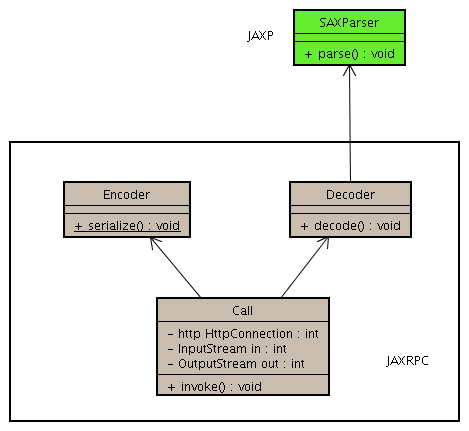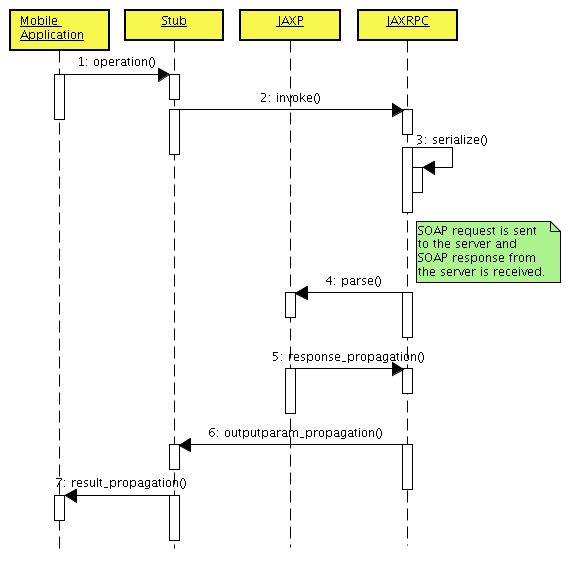
Contents
Mirae is a Web services sub-project to implement JSR 172. JSR 172 provides support for accessing Web services on the J2ME platform. It will deliver two new features to the J2ME platform:
1) Accessing SOAP based remote Web services from the J2ME platform.
2) Giving XML parsing support to the J2ME platform.
ABOUT THE NAME: "Mirae" (pronounced 'mee re' (as in 'red')) means future in Korean. Also the Japanese word for future is "Mirai" .. which is nearly the same. .
There are three important modules in MIRAE following,
Architecture Diagram

WSDL2WS_J2ME tool generates client side stub classes which has invocation code.
This invocation code is invoked by the mobile application to invoke the MIRAE
API. MIRAE API provides the mean for serializing the soap request using the
parameters passed from the mobile application via the stub and deserializing
the soap request.
MIRAE is a combination of two separate indipendent deliverables, such as JAXRPC
and JAXP.
JAXRPC provides access to web services from J2ME platform. It perform serialization of SOAP request.
JAXP is a SAX parser implementation which provide xml parsing capability to the J2ME platform. It deserializes the SOAP response received from the server.
Class Diagram

Web Service Invocation
